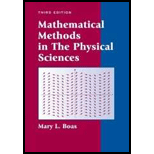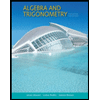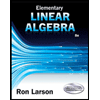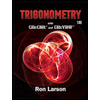
Mathematical Methods in the Physical Sciences
3rd Edition
ISBN: 9780471198260
Author: Mary L. Boas
Publisher: Wiley, John & Sons, Incorporated
expand_more
expand_more
format_list_bulleted
Textbook Question
Chapter 3.4, Problem 4P
Use
The line segment joining the midpoints of two sides of any triangle is parallel to the third side and half its length.
Expert Solution & Answer
Want to see the full answer?
Check out a sample textbook solution
Chapter 3 Solutions
Mathematical Methods in the Physical Sciences
Ch. 3.2 - The first equation in (2.6) written out in detail...Ch. 3.2 - Prob. 2PCh. 3.2 - For each of the following problems write and row...Ch. 3.2 - For each of the following problems write and row...Ch. 3.2 - For each of the following problems write and row...Ch. 3.2 - For each of the following problems write and row...Ch. 3.2 - For each of the following problems write and row...Ch. 3.2 - For each of the following problems write and row...Ch. 3.2 - For each of the following problems write and row...Ch. 3.2 - For each of the following problems write and row...
Ch. 3.2 - For each of the following problems write and row...Ch. 3.2 - For each of the following problems write and row...Ch. 3.2 - For each of the following problems write and row...Ch. 3.2 - For each of the following problems write and row...Ch. 3.2 - Find the rank of each of the following matrices....Ch. 3.2 - Find the rank of each of the following matrices....Ch. 3.2 - Find the rank of each of the following matrices....Ch. 3.2 - Find the rank of each of the following matrices....Ch. 3.3 - Evaluate the determinants in Problems 1 to 6 by...Ch. 3.3 - Evaluate the determinants in Problems 1 to 6 by...Ch. 3.3 - Evaluate the determinants in Problems 1 to 6 by...Ch. 3.3 - Evaluate the determinants in Problems 1 to 6 by...Ch. 3.3 - Evaluate the determinants in Problems 1 to 6 by...Ch. 3.3 - Evaluate the determinants in Problems 1 to 6 by...Ch. 3.3 - Prove the following by appropriate manipulations...Ch. 3.3 - Prob. 8PCh. 3.3 - Show without computation that the following...Ch. 3.3 - A determinant or a square matrix is called...Ch. 3.3 - In Problems 11 and 12 evaluate the determminants....Ch. 3.3 - In Problems 11 and 12 evaluate the determminants....Ch. 3.3 - Show that cos1012cos1012cos=cos3Ch. 3.3 - Show that the n-rowed determinant Hint: Expand...Ch. 3.3 - Use Cramers rule to solve Problem 2.3 and 2.11.Ch. 3.3 - In the following set of equations (from a quantum...Ch. 3.3 - Use Cramers rule to solve for x and t the Lorentz...Ch. 3.3 - Find z by Cramers rule:...Ch. 3.4 - Draw diagrams and prove (4.1).Ch. 3.4 - Given the vectors making the given angles With...Ch. 3.4 - Use vectors to prove the following theorems from...Ch. 3.4 - Use vectors to prove the following theorems from...Ch. 3.4 - Use vectors to prove the following theorems from...Ch. 3.4 - Use vectors to prove the following theorems from...Ch. 3.4 - Use vectors to prove the following theorems from...Ch. 3.4 - Use vectors to prove the following theorems from...Ch. 3.4 - Let A=2i+3j and B=4i4j. Show graphically, and find...Ch. 3.4 - If A+B =4j-i and A —B=i+3j, find A and B...Ch. 3.4 - Let 3i—j+4k, 7j—2k, i—3j+k be three vectors...Ch. 3.4 - Find the angle between the vectors A=2i+j2k and...Ch. 3.4 - If A = 4i-3k and B = —2i+2j— k, find the...Ch. 3.4 - Prob. 14PCh. 3.4 - Let A = 2i—j+2k. (a) Find a unit vector in the...Ch. 3.4 - Prob. 16PCh. 3.4 - Find three vectors (none of them parallel to a...Ch. 3.4 - Prob. 18PCh. 3.4 - Prob. 19PCh. 3.4 - Fine a vector perpendicular to both i+j and i-2k.Ch. 3.4 - Show that B|A|+A|B| and A|B|-B|A| are orthogonal.Ch. 3.4 - Square (A + B); interpret your result...Ch. 3.4 - If A = 2i—3j+ k and A • B = 0, does it follow...Ch. 3.4 - What is the value of (AB)2+(AB)2 ? Comment: This...Ch. 3.4 - Use vectors as in Problems 3 to 8, and also the...Ch. 3.4 - Use vectors as in Problems 3 to 8, and also the...Ch. 3.4 - Use vectors as in Problems 3 to 8, and also the...Ch. 3.4 - Use vectors as in Problems 3 to 8, and also the...Ch. 3.5 - In Problems 1 to 5, all lines are in the (x,y)...Ch. 3.5 - In Problems 1 to 5, all lines are in the (x,y)...Ch. 3.5 - In Problems 1 to 5, all lines are in the (x,y)...Ch. 3.5 - In Problems 1 to 5, all lines are in the (x,y)...Ch. 3.5 - In Problems 1 to 5, all lines are in the (x,y)...Ch. 3.5 - Prob. 6PCh. 3.5 - Prob. 7PCh. 3.5 - Prob. 8PCh. 3.5 - Prob. 9PCh. 3.5 - Prob. 10PCh. 3.5 - Prob. 11PCh. 3.5 - Prob. 12PCh. 3.5 - Find the symmetric equations (5.6) or (5.7) and...Ch. 3.5 - Prob. 14PCh. 3.5 - Prob. 15PCh. 3.5 - Prob. 16PCh. 3.5 - Prob. 17PCh. 3.5 - Prob. 18PCh. 3.5 - Prob. 19PCh. 3.5 - Find the symmetric equations (5.6) or (5.7) and...Ch. 3.5 - In Problems 21 to 23, find the angle between the...Ch. 3.5 - In Problems 21 to 23, find the angle between the...Ch. 3.5 - In Problems 21 to 23, find the angle between the...Ch. 3.5 - Find a point on both the planes (that is, on their...Ch. 3.5 - As in Problem 24, find the equations of the line...Ch. 3.5 - Prob. 26PCh. 3.5 - Find the equation of the plane through (2, 3,...Ch. 3.5 - Find the equation of the plane through (-4, -1, 2)...Ch. 3.5 - Find a point on the plane 2x — y — z = 13....Ch. 3.5 - Find the distance from the origin to the plane 3x...Ch. 3.5 - Find the distance from (-2, 4, 5) to the plane...Ch. 3.5 - Find the distance from (3, -1, 2) to the plane 5x...Ch. 3.5 - Findthe perpendicular distance between the two...Ch. 3.5 - Find the distance (perpendicular is understood)...Ch. 3.5 - Find the distance (2,5,1) to the line in Problem...Ch. 3.5 - Find the distance (3,2,5) to the line in Problem...Ch. 3.5 - Determine whether the lines x12=y+31=z43 and...Ch. 3.5 - Find the angle between the lines in Problem 37.Ch. 3.5 - In Problems 39 and 40, show that the given lines...Ch. 3.5 - In Problems 39 and 40, show that the given lines...Ch. 3.5 - In Problems 41 to 44, find the distance between...Ch. 3.5 - In Problems 41 to 44, find the distance between...Ch. 3.5 - In Problems 41 to 44, find the distance between...Ch. 3.5 - In Problems 41 to 44, find the distance between...Ch. 3.5 - A particle is traveling along the line (x — 3)/2...Ch. 3.6 - In Problems 1 to 3, find AB,BA,A+B,AB,A2,B2,5A,3B....Ch. 3.6 - In Problems 1 to 3, find AB,BA,A+B,AB,A2,B2,5A,3B....Ch. 3.6 - In Problems 1 to 3, find AB,BA,A+B,AB,A2,B2,5A,3B....Ch. 3.6 - Given the matrices A=23142105, B=241131,...Ch. 3.6 - Compute the product of each of the matrices in...Ch. 3.6 - The Pauli spin in quantum mechanics are...Ch. 3.6 - Find the matrix product 23142112 By evaluating...Ch. 3.6 - Show, by multiplying the matrices, that the...Ch. 3.6 - Find AB and BA given A=1236,B=10452. Observe that...Ch. 3.6 - Prob. 10PCh. 3.6 - Show that the unit matrix I has the property that...Ch. 3.6 - For the matrices in Example 3, verify that MM—1...Ch. 3.6 - In Problems 13 to 16, use (6.13) to find the...Ch. 3.6 - In Problems 13 to 16, use (6.13) to find the...Ch. 3.6 - In Problems 13 to 16, use (6.13) to find the...Ch. 3.6 - In Problems 13 to 16, use (6.13) to find the...Ch. 3.6 - Given the matrices A=111401420,B=101211212 (a)...Ch. 3.6 - Problem 17(b) is a special case of the general...Ch. 3.6 - In Problems 19 to 22, solve each set of equations...Ch. 3.6 - In Problems 19 to 22, solve each set of equations...Ch. 3.6 - In Problems 19 to 22, solve each set of equations...Ch. 3.6 - In Problems 19 to 22, solve each set of equations...Ch. 3.6 - Verify formula (6.13). Hint: Consider the product...Ch. 3.6 - Use the method of solving simultaneous equations...Ch. 3.6 - Verify (6.14) by multiplying the matrices and...Ch. 3.6 - In (6.14), let ==/2 and verify the result...Ch. 3.6 - Do Problem 26 if =/2,=/4.Ch. 3.6 - Verify the calculations in (6.15), (6.16), and...Ch. 3.6 - Show that if A and B are matrices which dont...Ch. 3.6 - For the Pauli spin matrix A in Problem 6, find the...Ch. 3.6 - Repeat Problem 30 for the Pauli spin matrix C in...Ch. 3.6 - For the Pauli spin matrix B in Problem 6, find eiB...Ch. 3.7 - Prob. 1PCh. 3.7 - Are the following linear functions? Prove your...Ch. 3.7 - Are the following linear functions? Prove your...Ch. 3.7 - Prob. 4PCh. 3.7 - Are the following linear vector functions? Prove...Ch. 3.7 - Are the following linear vector functions? Prove...Ch. 3.7 - Are the following operators linear? Definite...Ch. 3.7 - Are the following operators linear? Find the...Ch. 3.7 - Are the following operators linear? Find the...Ch. 3.7 - Are the following operators linear? Find the...Ch. 3.7 - Are the following operators linear? Find the...Ch. 3.7 - Are the following operators linear? Let D stand...Ch. 3.7 - Are the following operators linear? (a) As in...Ch. 3.7 - Are the following operators linear? Find the...Ch. 3.7 - Are the following operators linear? Find the...Ch. 3.7 - Are the following operators linear? Find the...Ch. 3.7 - Are the following operators linear? Find the...Ch. 3.7 - With the cross product of two vectors defined by...Ch. 3.7 - If multiply a complex number z=ri by ei, we get...Ch. 3.7 - Verify equations (7.13) using Figure 7.5. Hints:...Ch. 3.7 - Do the details Of Example 3 as follows: Verify...Ch. 3.7 - Let each of the following matrices represent an...Ch. 3.7 - Let each of the following matrices represent an...Ch. 3.7 - Let each of the following matrices represent an...Ch. 3.7 - Let each of the following matrices represent an...Ch. 3.7 - Let each of the following matrices represent an...Ch. 3.7 - Let each of the following matrices represent an...Ch. 3.7 - Write the matrices which produce a rotation about...Ch. 3.7 - Construct the matrix corresponding to a rotation...Ch. 3.7 - For the matrices G and K in (7.21), find the...Ch. 3.7 - To see a physical example of non-commuting...Ch. 3.7 - For each of the following matrices, find its...Ch. 3.7 - For each of the following matrices, find its...Ch. 3.7 - For each of the following matrices, find its...Ch. 3.7 - For each of the following matrices, find its...Ch. 3.8 - Write each of the vectors (8.1) as a linear...Ch. 3.8 - In Problems 2 to 4, find out whether the given...Ch. 3.8 - In Problems 2 to 4, find out whether the given...Ch. 3.8 - In Problems 2 to 4, find out whether the given...Ch. 3.8 - Show that any vector V in a plane can be written...Ch. 3.8 - Use Problem 5 to write V = 3i + 5j as a linear...Ch. 3.8 - As in Problem 6, write V = 4i-5j in terms of the...Ch. 3.8 - In Problems 8 to 15, use (8.5) to show that the...Ch. 3.8 - In Problems 8 to 15, use (8.5) to show that the...Ch. 3.8 - In Problems 8 to 15, use (8.5) to show that the...Ch. 3.8 - In Problems 8 to 15, use (8.5) to show that the...Ch. 3.8 - In Problems 8 to 15, use (8.5) to show that the...Ch. 3.8 - In Problems 8 to 15, use (8.5) to show that the...Ch. 3.8 - In Problems 8 to 15, use (8.5) to show that the...Ch. 3.8 - In Problems 8 to 15, use (8.5) to show that the...Ch. 3.8 - Prove that if the Wronskian (8.5) is not...Ch. 3.8 - In Problems 17 to 20, solve the sets of...Ch. 3.8 - In Problems 17 to 20, solve the sets of...Ch. 3.8 - In Problems 17 to 20, solve the sets of...Ch. 3.8 - In Problems 17 to 20, solve the sets of...Ch. 3.8 - Find a condition for four points in space to lie...Ch. 3.8 - Find a condition for three lines in a plane to...Ch. 3.8 - Using (8.9), find the values of such that the...Ch. 3.8 - Using (8.9), find the values of such that the...Ch. 3.8 - Using (8.9), find the values of such that the...Ch. 3.8 - For each of the following, write the solution in...Ch. 3.8 - For each of the following, write the solution in...Ch. 3.8 - For each of the following, write the solution in...Ch. 3.9 - Use index notation as in 9.9 to prove the second...Ch. 3.9 - Use index notation to prove the distributive law...Ch. 3.9 - Given the following matrix, find the transpose,...Ch. 3.9 - Repeat Problem 3 given A=02i1i20300.Ch. 3.9 - Show that the product AAT is a symmetric matrix.Ch. 3.9 - Give numerical examples of: a symmetric matrix; a...Ch. 3.9 - Write each of the items in the second column of...Ch. 3.9 - Prove that ABt=BtAt. Hint: see 9.10. Verify 9.11,...Ch. 3.9 - In 9.1 we have defined the adjoint of a matrix as...Ch. 3.9 - Show that if a matrix is orthogonal and its...Ch. 3.9 - Show that a real Hermitian matrix is symmetric....Ch. 3.9 - Show that the definition of a Hermitian matrix...Ch. 3.9 - Show that the following matrix is a unitary...Ch. 3.9 - Prob. 14PCh. 3.9 - Show that the Pauli spin matrices (Problem 6.6)...Ch. 3.9 - Let Cij=1i+jMij be the cofactor of element aij in...Ch. 3.9 - Show that if A and B are symmetric, then AB is not...Ch. 3.9 - If A and B are symmetric matrices, show that their...Ch. 3.9 - Prove that TrAB=TrBA. Hint: see proof of (9.13)....Ch. 3.9 - Show that the determinant of a unitary matrix is a...Ch. 3.9 - Show that the transpose of a sum of matrices is...Ch. 3.9 - Show that a unitary matrix is a normal matrix,...Ch. 3.9 - Show that the following matrices are Hermitian...Ch. 3.9 - Show that an orthogonal transformation preserves...Ch. 3.9 - Show that the inverse of an orthogonal matrix is...Ch. 3.10 - Find the distance between the points 4,1,2,7 and...Ch. 3.10 - For the given sets of vectors, find the dimension...Ch. 3.10 - (a) Find the cosines of the angles between pairs...Ch. 3.10 - For each given set of basis vectors, use the...Ch. 3.10 - By 10.6 and 10.7, find the norms of A and B and...Ch. 3.10 - Write out the proof of the Schwarz inequality 10.9...Ch. 3.10 - Show that, in n-dimensional space, any n+1 vectors...Ch. 3.10 - Show that two different sets of basis vectors for...Ch. 3.10 - Write equations 10.6 to 10.9 in matrix form as...Ch. 3.10 - Prove that A+BA+B. This is called the triangle...Ch. 3.11 - Verify 11.7. Also verify 11.12 and find the...Ch. 3.11 - Verify that the two eigenvectors in 11.8 are...Ch. 3.11 - If C is orthogonal and M is symmetric, show that...Ch. 3.11 - Find the inverse of the rotation matrix in 7.13;...Ch. 3.11 - Show that the C matrix in 11.10 does represent a...Ch. 3.11 - Show that if C is a matrix whose columns are the...Ch. 3.11 - Generalize Problem 6 to three dimensions; to n...Ch. 3.11 - Show that under the transformation 11.1, all...Ch. 3.11 - Show that detC1MC=detM. Hints: See 6.6. What is...Ch. 3.11 - Show that TrC1MC=TrM. Hint: see (9.13). Thus show...Ch. 3.11 - Find the inverse of the transformation...Ch. 3.11 - Find the eigenvalues and eigenvectors of the...Ch. 3.11 - Find the eigenvalues and eigenvectors of the...Ch. 3.11 - Find the eigenvalues and eigenvectors of the...Ch. 3.11 - Find the eigenvalues and eigenvectors of the...Ch. 3.11 - Find the eigenvalues and eigenvectors of the...Ch. 3.11 - Find the eigenvalues and eigenvectors of the...Ch. 3.11 - Find the eigenvalues and eigenvectors of the...Ch. 3.11 - Find the eigenvalues and eigenvectors of the...Ch. 3.11 - Find the eigenvalues and eigenvectors of the...Ch. 3.11 - Find the eigenvalues and eigenvectors of the...Ch. 3.11 - Find the eigenvalues and eigenvectors of the...Ch. 3.11 - Find the eigenvalues and eigenvectors of the...Ch. 3.11 - Find the eigenvalues and eigenvectors of the...Ch. 3.11 - Find the eigenvalues and eigenvectors of the...Ch. 3.11 - Find the eigenvalues and eigenvectors of the...Ch. 3.11 - Let each of the following matrices M describe a...Ch. 3.11 - Let each of the following matrices M describe a...Ch. 3.11 - Let each of the following matrices M describe a...Ch. 3.11 - Let each of the following matrices M describe a...Ch. 3.11 - Let each of the following matrices M describe a...Ch. 3.11 - Let each of the following matrices M describe a...Ch. 3.11 - Find the eigenvalues and eigenvectors of the real...Ch. 3.11 - By multiplying out M=CDC1 the diagonal matrix...Ch. 3.11 - The characteristic equation for a second-order...Ch. 3.11 - Verify the eigenvalues and eigenvectors of matrix...Ch. 3.11 - Starting with 11.23, obtain 11.24. Hints: Take the...Ch. 3.11 - Verify equation 11.25. Hint: Remember from Section...Ch. 3.11 - Write out the detailed proof of 11.27. Hint:...Ch. 3.11 - Verify the details as indicated in diagonalizing H...Ch. 3.11 - Verify that each of the following matrices is...Ch. 3.11 - Verify that each of the following matrices is...Ch. 3.11 - Verify that each of the following matrices is...Ch. 3.11 - Verify that each of the following matrices is...Ch. 3.11 - Verify the details in the discussion of the...Ch. 3.11 - We have seen that an orthogonal matrix with...Ch. 3.11 - Find a unitary matrix U which diagonalizes A in...Ch. 3.11 - Show that an orthogonal matrix M with all real...Ch. 3.11 - Verify the results for F in the discussion of...Ch. 3.11 - Show that the trace of a rotation matrix equals...Ch. 3.11 - Show that each of the following matrices is...Ch. 3.11 - Show that each of the following matrices is...Ch. 3.11 - Show that each of the following matrices is...Ch. 3.11 - Show that each of the following matrices is...Ch. 3.11 - Show that each of the following matrices is...Ch. 3.11 - Show that each of the following matrices is...Ch. 3.11 - Show that if D is a diagonal matrix, then Dn is...Ch. 3.11 - Note in Section 6 [see (6.15)] that, for the given...Ch. 3.11 - Repeat the last part of Problem 58 for the matrix...Ch. 3.11 - The Caley-Hamilton theorem states that A matrix...Ch. 3.11 - At the end of Section 9 we proved that if H is a...Ch. 3.11 - Show that if matrices F and G can be diagonalized...Ch. 3.12 - Verify that 12.2 multiplied out is 12.1.Ch. 3.12 - Find the equations of the following conics and...Ch. 3.12 - Find the equations of the following conics and...Ch. 3.12 - Find the equations of the following conics and...Ch. 3.12 - Find the equations of the following conics and...Ch. 3.12 - Find the equations of the following conics and...Ch. 3.12 - Find the equations of the following conics and...Ch. 3.12 - Carry through the details of Example 2 to find the...Ch. 3.12 - For Problems 2 to 7, find the rotation matrix C...Ch. 3.12 - Verify equations 12.13 and 12.14. Solve 12.15 to...Ch. 3.12 - Verify the details of Example 4, equations 12.18...Ch. 3.12 - Verify the details of Example 5, equations 12.26...Ch. 3.12 - Verify the details of Example 6, equations 12.37...Ch. 3.12 - Find the characteristic frequencies and the...Ch. 3.12 - Find the characteristic frequencies and the...Ch. 3.12 - Find the characteristic frequencies and the...Ch. 3.12 - Find the characteristic frequencies and the...Ch. 3.12 - Find the characteristic frequencies and the...Ch. 3.12 - Find the characteristic frequencies and the...Ch. 3.12 - Carry through the details of Example 7.Ch. 3.12 - Find the characteristic frequencies and the...Ch. 3.12 - Find the characteristic frequencies and the...Ch. 3.12 - Find the characteristic frequencies and the...Ch. 3.13 - Write the four rotation matrices for rotations of...Ch. 3.13 - Following the text discussion of the cyclic group...Ch. 3.13 - Prob. 3PCh. 3.13 - Show that the matrices...Ch. 3.13 - Consider the group of order 4 with unit element I...Ch. 3.13 - Consider the integers 0, 1, 2, 3 under addition...Ch. 3.13 - Consider the set of numbers 1, 3, 5, 7 with...Ch. 3.13 - Verify 13.3 and 13.4. Hints: For the rotation and...Ch. 3.13 - Show that any cyclic group is Abelian. Hint: Does...Ch. 3.13 - Prob. 10PCh. 3.13 - Do Problem 10 for a rectangle. Note that now only...Ch. 3.13 - Verify 13.5 and then also show that A, B are the...Ch. 3.13 - Using the discussion of simultaneous...Ch. 3.13 - Use the multiplication table you found in Problem...Ch. 3.13 - By Problem 13, you know that the matrices in...Ch. 3.13 - Do Problem 15 for the group of matrices you found...Ch. 3.13 - Verify that the sets listed in 13.7c are groups.Ch. 3.13 - Prob. 18PCh. 3.13 - Verify that the sets listed in 13.7e are groups....Ch. 3.13 - Is the set of all orthogonal 3-by-3 matrices with...Ch. 3.13 - Prob. 21PCh. 3.14 - Verify the statements indicated in Examples 1 to 5...Ch. 3.14 - For each of the following sets, either verify (as...Ch. 3.14 - For each of the following sets, either verify (as...Ch. 3.14 - For each of the following sets, either verify (as...Ch. 3.14 - For each of the following sets, either verify (as...Ch. 3.14 - For each of the following sets, either verify (as...Ch. 3.14 - For each of the following sets, either verify (as...Ch. 3.14 - For each of the following sets, either verify (as...Ch. 3.14 - For each of the following sets, either verify (as...Ch. 3.14 - For each of the following sets, either verify (as...Ch. 3.14 - For each of the following sets, either verify (as...Ch. 3.14 - For each of the following sets, either verify (as...Ch. 3.14 - For each of the following sets, either verify (as...Ch. 3.14 - For each of the following sets, either verify (as...Ch. 3.14 - For each of the following sets, either verify (as...Ch. 3.14 - For each of the following sets, either verify (as...Ch. 3.15 - Show that if each element of one row (or column)...Ch. 3.15 - What is wrong with the following argument? If we...Ch. 3.15 - Find the equations of the line through the points...Ch. 3.15 - Given the line r=3ij+2i+j2kt: Find the equation of...Ch. 3.15 - Write the equations of a straight line through the...Ch. 3.15 - Derive the formula D=ax0+by0+cz0da2+b2+c2 for the...Ch. 3.15 - Given the matrices A, B, C below, find or mark as...Ch. 3.15 - Given A=102ii3010i, find AT,A,At,A1.Ch. 3.15 - The following matrix product is used in discussing...Ch. 3.15 - The following matrix product is used in discussing...Ch. 3.15 - There is a one-to-one correspondence between...Ch. 3.15 - The vectors A=aibj and B=ci+dj form two sides of a...Ch. 3.15 - The plane 2x+3y+6z=6 intersects the coordinate...Ch. 3.15 - In Problems 14 to 17, multiply matrices to find...Ch. 3.15 - In Problems 14 to 17, multiply matrices to find...Ch. 3.15 - In Problems 14 to 17, multiply matrices to find...Ch. 3.15 - In Problems 14 to 17, multiply matrices to find...Ch. 3.15 - Prob. 18MPCh. 3.15 - Find the eigenvalues and eigenvectors of the...Ch. 3.15 - Find the eigenvalues and eigenvectors of the...Ch. 3.15 - Find the eigenvalues and eigenvectors of the...Ch. 3.15 - Find the eigenvalues and eigenvectors of the...Ch. 3.15 - Find the eigenvalues and eigenvectors of the...Ch. 3.15 - Find the eigenvalues and eigenvectors of the...Ch. 3.15 - Find the C matrix which diagonalizes the matrix M...Ch. 3.15 - Repeat Problem 25 for Problem 19. Find the C...Ch. 3.15 - In Problems 27 to 30, rotate the given quadric...Ch. 3.15 - In Problems 27 to 30, rotate the given quadric...Ch. 3.15 - In Problems 27 to 30, rotate the given quadric...Ch. 3.15 - In Problems 27 to 30, rotate the given quadric...Ch. 3.15 - Find the characteristic vibration frequencies of a...Ch. 3.15 - Do Problem 31 if the spring constants are...Ch. 3.15 - Prove the Caley-Hamilton theorem (Problem 11.60)...Ch. 3.15 - In problems 6.30 and 6.31, you found the matrices...Ch. 3.15 - Show that a square matrix A has an inverse if and...Ch. 3.15 - Write the three 3 by 3 matrices for 180 rotations...Ch. 3.15 - Show that for a given irreducible representation...Ch. 3.15 - For a cyclic group, show that every element is a...
Additional Math Textbook Solutions
Find more solutions based on key concepts
In the following exercises, consider the graph of the function y=f(x) shown here. Which of the statements about...
Calculus Volume 1
Solve each equation by using the rules for rewriting equations. It is easier to solve an equation that has frac...
Mathematics All Around (6th Edition)
Let 2n (equally spaced) points on a circle be chosen. Show that the number of ways to join these points in pair...
Introductory Combinatorics
Four-Sided Dice A pair of four-sided dice-each with the numbers from 1 to 4 on their sides-are rolled, and the ...
Finite Mathematics & Its Applications (12th Edition)
Checkpoint1
Use the substitution method to solve this system:
Answers to Checkpoint exercises are found at the...
Mathematics with Applications In the Management, Natural, and Social Sciences (12th Edition)
The equivalent expression of x(y+z) by using the commutative property.
Calculus for Business, Economics, Life Sciences, and Social Sciences (13th Edition)
Knowledge Booster
Learn more about
Need a deep-dive on the concept behind this application? Look no further. Learn more about this topic, subject and related others by exploring similar questions and additional content below.Recommended textbooks for you
 Linear Algebra: A Modern IntroductionAlgebraISBN:9781285463247Author:David PoolePublisher:Cengage LearningAlgebra & Trigonometry with Analytic GeometryAlgebraISBN:9781133382119Author:SwokowskiPublisher:Cengage
Linear Algebra: A Modern IntroductionAlgebraISBN:9781285463247Author:David PoolePublisher:Cengage LearningAlgebra & Trigonometry with Analytic GeometryAlgebraISBN:9781133382119Author:SwokowskiPublisher:Cengage Algebra and Trigonometry (MindTap Course List)AlgebraISBN:9781305071742Author:James Stewart, Lothar Redlin, Saleem WatsonPublisher:Cengage Learning
Algebra and Trigonometry (MindTap Course List)AlgebraISBN:9781305071742Author:James Stewart, Lothar Redlin, Saleem WatsonPublisher:Cengage Learning Elementary Linear Algebra (MindTap Course List)AlgebraISBN:9781305658004Author:Ron LarsonPublisher:Cengage Learning
Elementary Linear Algebra (MindTap Course List)AlgebraISBN:9781305658004Author:Ron LarsonPublisher:Cengage Learning Trigonometry (MindTap Course List)TrigonometryISBN:9781337278461Author:Ron LarsonPublisher:Cengage Learning
Trigonometry (MindTap Course List)TrigonometryISBN:9781337278461Author:Ron LarsonPublisher:Cengage Learning

Linear Algebra: A Modern Introduction
Algebra
ISBN:9781285463247
Author:David Poole
Publisher:Cengage Learning

Algebra & Trigonometry with Analytic Geometry
Algebra
ISBN:9781133382119
Author:Swokowski
Publisher:Cengage

Algebra and Trigonometry (MindTap Course List)
Algebra
ISBN:9781305071742
Author:James Stewart, Lothar Redlin, Saleem Watson
Publisher:Cengage Learning

Elementary Linear Algebra (MindTap Course List)
Algebra
ISBN:9781305658004
Author:Ron Larson
Publisher:Cengage Learning

Trigonometry (MindTap Course List)
Trigonometry
ISBN:9781337278461
Author:Ron Larson
Publisher:Cengage Learning
Quadrilaterals: Missing Angles and Sides; Author: rhornfeck;https://www.youtube.com/watch?v=knVj1O0L2TM;License: Standard YouTube License, CC-BY
STD IX | State Board | Types of Quadrilateral; Author: Robomate;https://www.youtube.com/watch?v=wh0KQ4UB0EU;License: Standard YouTube License, CC-BY